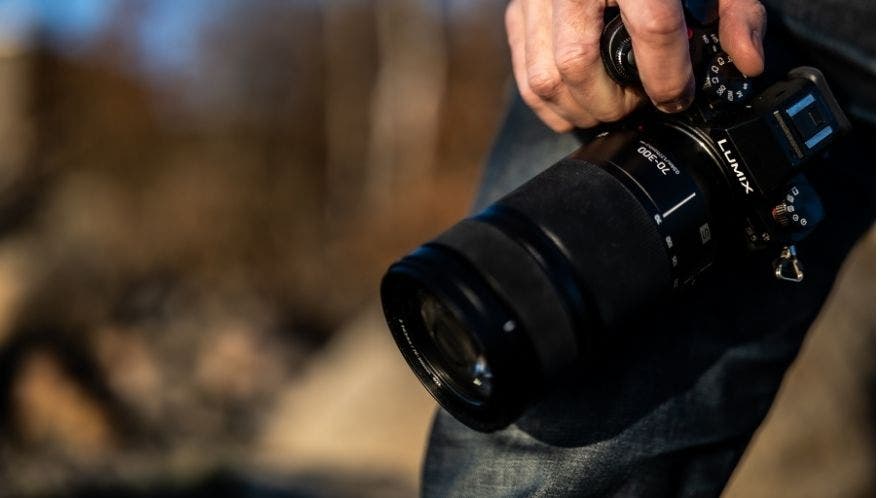Well, the rumors were true: Panasonic is releasing a brand new, long telephoto lens that shoots macro and video to add to its arsenal of L-mount glass.
Introducing the Panasonic Lumix Pro S 70-300mm with variable aperture zoom lens. This is an f/4.5 – f/5.6 telephoto lens that’s geared toward sports and wildlife photographers, but since I don’t shoot sports or wildlife, I took our model Vanessa out into the field for a snowy portrait session to test it out. There is a lot to cover about this lens because it’s really well thought out.
For a 300mm-focal-length lens, it’s actually quite light, weighing in at just under two pounds. You will not find a tripod collar in the box because it doesn’t need one. On my Lumix S1, I was able to shoot handheld photo and video and could barely feel it in my hand. To be honest, I couldn’t believe how light the camera and lens combo was, especially because it wasn’t a kit lens combination.

Smooth Footage, even when Handheld
This is a pro lens, and when paired with the Panasonic S1, S1R, S5 or S1H, the 70-300 offers dual body and lens image stabilization. Many of the shots you’ll see in our video review are zoomed in all the way to 300mm handheld—and, by the smoothness of it, you’d think it was locked down. This is largely because Panasonic is killing it in the image stabilization department, with industry-topping five and a half stop/five-axis dual image stabilization.

A Seamless, Uninterrupted Zoom
Smooth zooming is another great feature. When you zoom through the focal length range, the aperture changes due to its variable nature, and you’ll notice a smooth transition. The change from a wide-open f/4.5 down to f/5.6 is entirely unnoticeable except for the change in brightness (due to aperture change). There were no visible artifacts or anything that would suggest that you couldn’t zoom in while filming and not be pleased with the result.

Responsive Autofocus
The auto-focus was responsive for the most part. I used head and body detection the entire shoot and had very few issues with searching. The image only went completely soft once or twice as the contrast-based autofocus worked to find focus.
The auto-focus pairing of the 70-300 and my Panasonic S1 is a nice grouping overall, and in video mode it tracked nicely as my subject walked toward the camera. I let the camera and lens do the work without continually tapping the rear LCD to maintain focus. I’m increasingly confident in the Lumix AF system as more and more lenses are released, but there are some strides left to be made.
Doubles as a Macro Lens
Another cool thing about this lens is that it is a half-macro lens which gives you the ability to get macro shots while zoomed out at 70mm and also have macro ability through the range of zoom all the way in to 300mm. At 70mm you can be just from just .54 meters away from your target which is remarkable for a zoom lens with this kind of range. Here is a sample of images to showcase the versatility:




In my video example above as well, you’ll notice I’m pretty close to the subject and able to rack a nice close-up shot without having to be far away. When I zoomed into 300mm I had to back off to about .74 meters, but that’s extremely close for telephoto/macro focus distance.
One more thing worth mentioning for video shooters: The 70-300 has focus breathing suppression to help keep objects in the frame the same size when changing focus to minimize distortion. You’ll see an actual example of this feature in my video review. When I pull focus from the background to the foreground the plane where the top of my subject rests in the image doesn’t change so there very little distortion caused by moving the focus wheel.
For cinematographers, especially those who will film wildlife documentaries and sports films, the 70-300 become a very attractive option for video acquisition. I think it goes without saying much that the color replication and clarity of this lens is just beautiful and I actually enjoyed using it in a portrait scenario where I would normally use a fixed f/2.8 or faster aperture lens. For a variable focal length zoom lens to perform this well for this purpose is nice to see.
The Panasonic Lumix Pro S 70-300mm is available for preorder for .
Feature image provided by Panasonic






